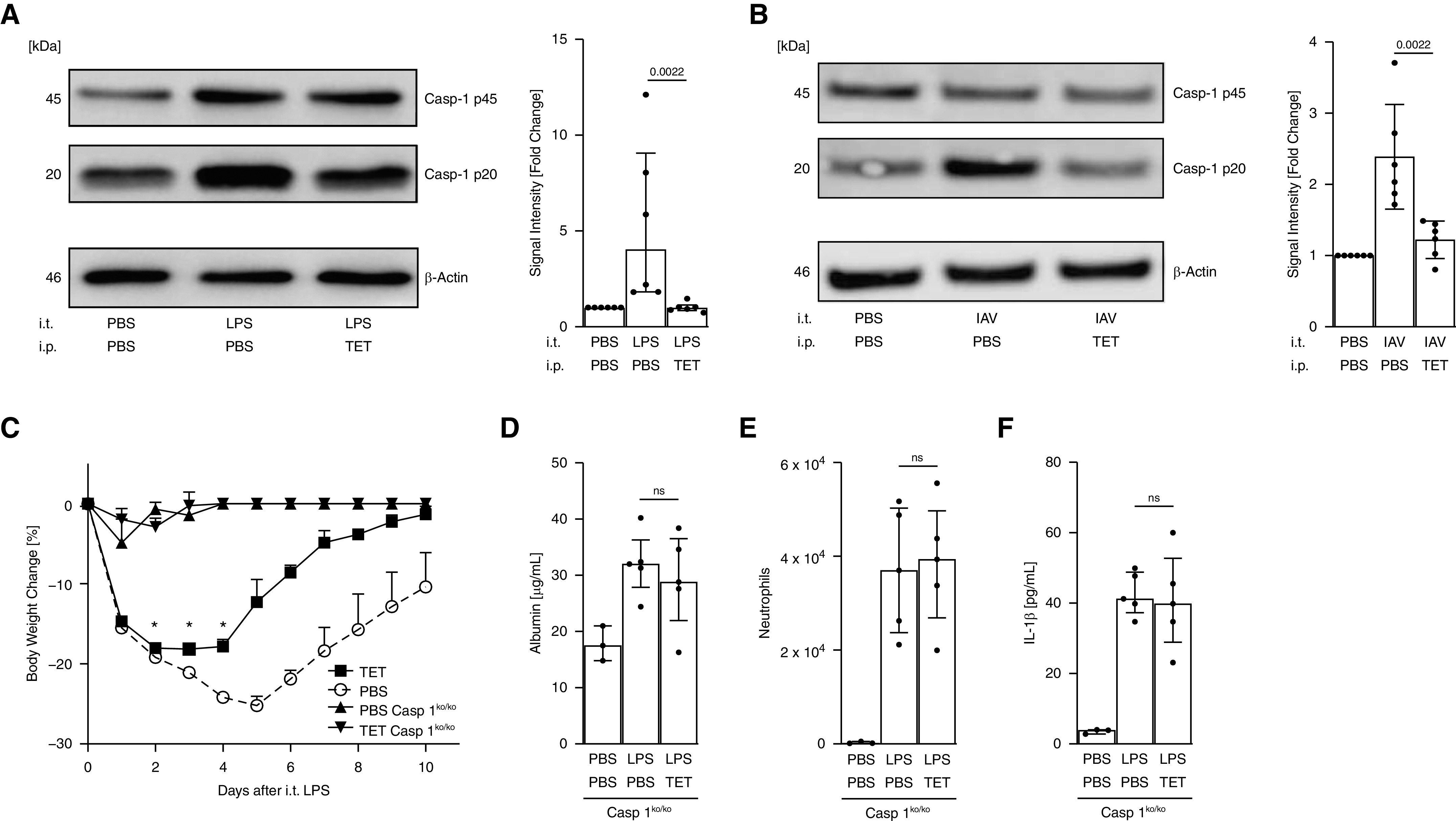Figure 5.

Protection against LPS- and influenza virus–induced acute respiratory distress syndrome by tetracycline (TET) is mediated via inhibition of caspase-1 (Casp-1). Wild-type (WT) C57BL/6J and Caspase-1–knockout (KO) mice were challenged with LPS or IAV as indicated and treated with TET as described in Figures 2 and 3. Lungs from WT mice were homogenized, and pro–Caspase-1 (p45) and a subunit of activated Caspase-1 (p20) were measured via immunoblot. (A and B) Representative blot of three independent experiments and quantification of signal intensity is shown. (C) Mice were evaluated daily for loss of body weight (n = 5 per group). BAL fluid of Caspase-1ko/ko mice was obtained 8 hours after LPS instillation and monitored for (D) albumin, (E) neutrophils, and (F) IL-1β via bicinchoninic acid assay, flow cytometry, and ELISA, respectively (n ≥ 3 per group). Median with interquartile range. *P < 0.05; Mann-Whitney Test. Bonferroni correction for repeated statistical tests (body weight change) and adjustment of significance level to *P < 0.005. IAV = influenza A virus; ns = not significant.
